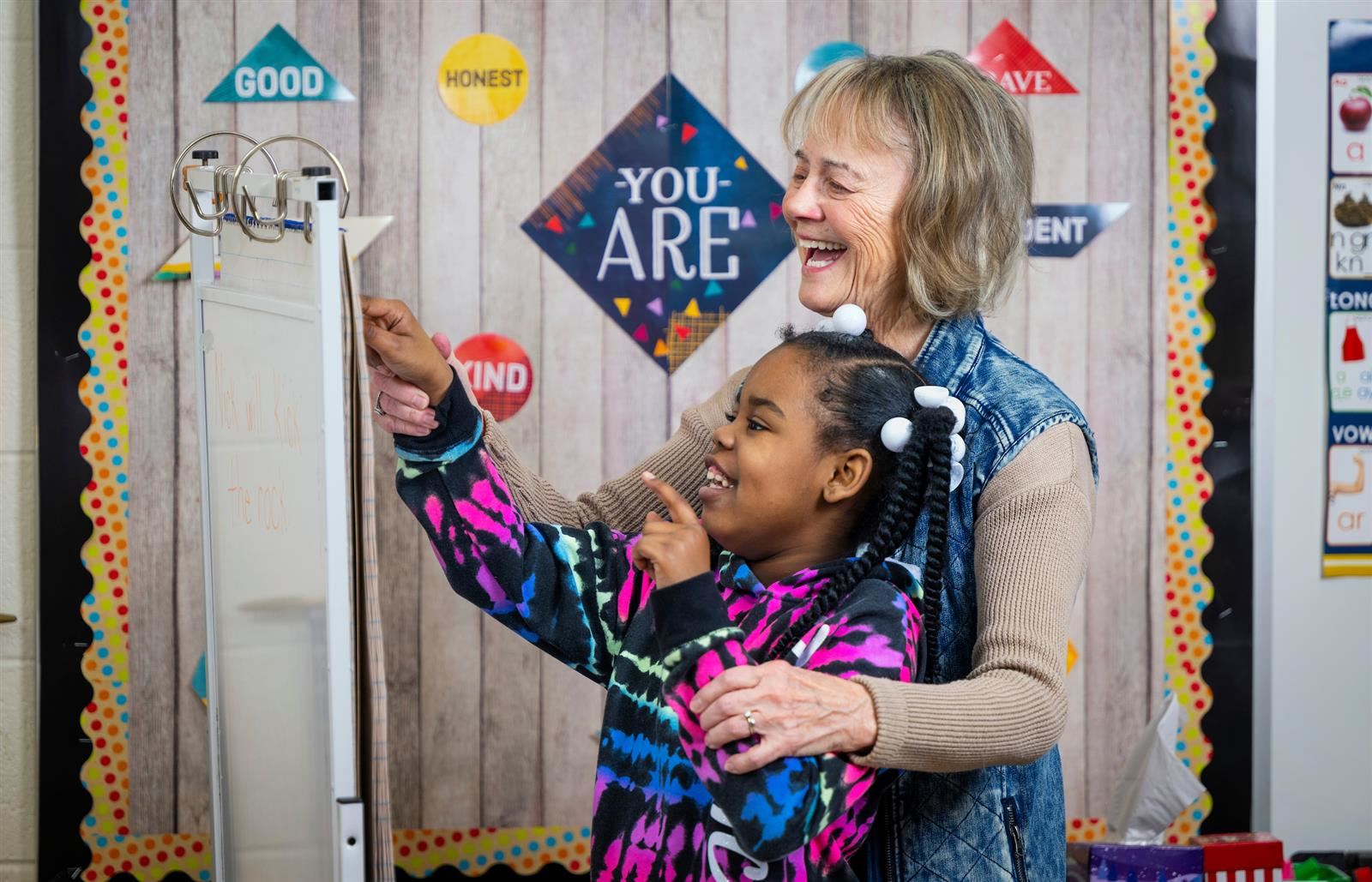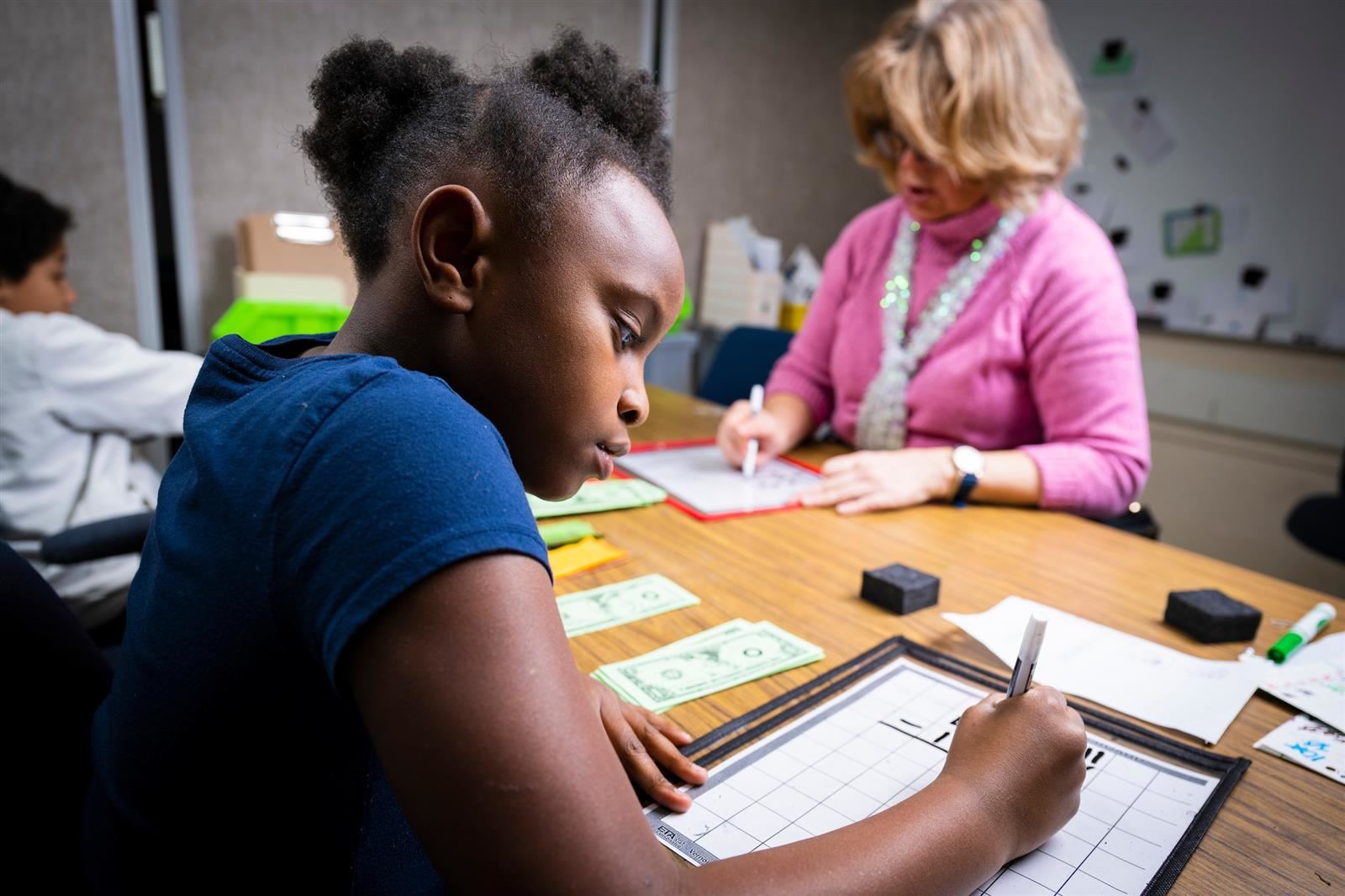- Council of the Great City Schools
- Federally Funded Tutoring Program Credited for Getting Guilford County Schools Students on Track
Digital Urban Educator - April 2025
Page Navigation
- CNN Congressional Correspondent Shares Insights from Capitol Hill with Urban Educators
- Political Commentator Emphasizes the Importance of Leadership
- Former Federal Judge Discusses the Changing U.S. Public Schools Legal Landscape
- New Orleans Names New Leader; Kansas City Superintendent Receives Contract Extension
- New Report Finds Current Urban Superintendents Are Relatively New to Their Roles
- School Bonds Pass in Kansas City and Anchorage
- Federally Funded Tutoring Program Credited for Getting Guilford County Schools Students on Track
- Legislative Column
Federally Funded Tutoring Program Credited for Getting Guilford County Schools Students on Track
-
At a time when U.S. public school students continue to experience COVID-19-related academic and social setbacks, students attending Guilford County Schools in Greensboro, N.C., are showing academic gains. The district credits its homegrown tutoring program for the improvement.

According to the district’s interim director of accountability, research, and evaluation Jimmy Leak, students in school year 2023-2024 showed larger reading gains than students in the rest of the state. In addition, 4th-grade math scores on the 2024 National Assessment of Educational Progress (NAEP) were slightly higher than the pre-pandemic 2019 average, showing that those students have recovered much faster than their peers in the rest of the state and nationwide.
However, the tutoring program’s previously expansive reach has been scaled back because federal COVID-19 relief funds that fueled it have dried up.
Guilford County Schools introduced its tutoring program on an informal basis in the Fall of 2020. Initially, it involved just a few tutors and an online partnership with tutors from a local university, aimed at addressing pre-COVID-19 math difficulties among middle school students, according to Kara Hamilton, the district's director of tutoring.
Community members, including local universities, were reaching out to the district because they knew students were struggling academically due to remote learning.
“Our community was asking, ‘How can we help?’” Hamilton said.
Once federal dollars became available through the Elementary and Secondary School Emergency Relief Fund (ESSER), the third-largest district in the state formalized and scaled up the program for the 2021-22 school year.
“With those federal relief dollars…we had the flexibility to figure out what would be most impactful for students,” Hamilton said.
While other districts were using ESSER funds to contract with tutoring vendors who employ tutors from across the country for short, 20-minute, once-a-week sessions, Guilford administrators had a different vision for its tutoring program.
First, the district wanted to leverage its local community’s enthusiastic offers of support to create a high-dosage tutoring model, which research supports.
“Our community knows our students and was reaching out to help,” Hamilton said. District officials partnered with local universities and community colleges to attract education, science, technology, engineering, and math (STEM) majors and retired educators to its classrooms to work directly with students.
Regular and sustained tutoring is a crucial component of Guilford's tutoring program, particularly for supporting students who have encountered what Jusmar Maness, Guilford's chief academic officer, refers to as "unfinished learning." This unfinished learning has resulted from the challenges posed by remote education and the other negative impacts of the COVID-19 pandemic on students and their families.
“Research shows high-dosage,” or one-on-one tutoring at least 30 minutes per session at least three times per week, “is really what helps unfinished learning,” Maness explained.
Equally important, Hamilton said, was equitable student access to tutoring, something many of its students didn’t already have.
“Tutoring has been around forever,” Hamilton explained. “We are a very high-poverty district. We wanted something that students could access during the instructional day…to close those achievement gaps that were widened because of the pandemic.”
How Guilford’s homegrown tutoring program worked
District officials identified K-12 students with the most significant academic needs – whose standardized test scores were in the 20th percentile or below—for tutoring. Then, once ESSER funds became available, the district collaborated with university partners UC Greensboro and North Carolina Agricultural and Technical State University to set up systems and structures that would enable the program to reach those students.

“We have been very strategic and intentional. We knew we needed formal systems and processes because this hadn’t been done before,” Hamilton said.
The tutoring program staff took on recruiting, hiring, and training tutors from university partners and the local community. Training included an extensive introduction to Guilford’s curricular resources, so tutors were well-versed in any instructional materials being used in any classroom they visit.
Each year, the program grew to serve more students and align tutoring to teachers’ and schools’ goals for students.
“We continued to scale, hiring more tutors and serving more students,” Hamilton said.
By the end of the 2023-24 school year, the district had more than 700 tutors working with 17,000 of the district’s 70,000 students. Most recently, Hamilton said, tutors have been trained and certified in delivering formal academic interventions to students through the district’s multitiered system of supports.
Guilford also offers all students in grades 3 through 12 virtual on-demand homework help. The district created research partnerships with external evaluators to assess program implementation against district goals.
“We have learned a lot over the last three years,” said Hamilton. “ESSER really gave us that space to learn.”
Evaluation results have shown that valuable learning occurred for district staff regarding the use of tutoring to support students who suffered myriad unfinished learning during the pandemic. In addition to the academic gains those students have experienced, Maness said the tutoring program has also included an additional adult in their school building who they can rely on.
“We have worked hard to train teachers who know the students. We see these trusted relationships between tutors and students,” she said.
Program’s future uncertain after ESSER funds end
But during the current school year, as Guilford and hundreds of other ESSER recipients around the country implement the last of the federal pandemic emergency funds, programs like the district’s tutoring program hang in the balance.
“This year, we’re operating with about one-third of the budget we’re used to,” Hamilton said. Fewer dollars forced the program to scale back from 700-plus tutors to 200, which in turn meant during the 2024-2025 school year, Guilford is offering tutoring to only 6,500 of the 17,000 students it previously served. The loss of funds forced the district to narrow the tutoring focus to students in high-needs grade bands and subject areas (K–3 literacy and 6–8 math).
Sustaining that work without the support ESSER funds provided isn’t easy, Maness added.
“We know tutoring helps. We know it works. We’re fortunate to have gained philanthropic support [for the tutoring program], but sustainability matters,” Maness said.
Despite having to scale back the tutoring program to specific grade levels this year, Maness said the district is “not stopping the work even though the funds are no longer there. But we want to make sure we don’t leave anybody behind.”
Media Contact:
Contact Name
Contact@email.com
(000) 000-0000
Contact Name
Contact@email.com
(000) 000-0000
Contact Name
Contact@email.com
(000) 000-0000
Media Contact:
Contact Name
Contact@email.com
(000) 000-0000
Contact Name
Contact@email.com
(000) 000-0000
Contact Name
Contact@email.com
(000) 000-0000


